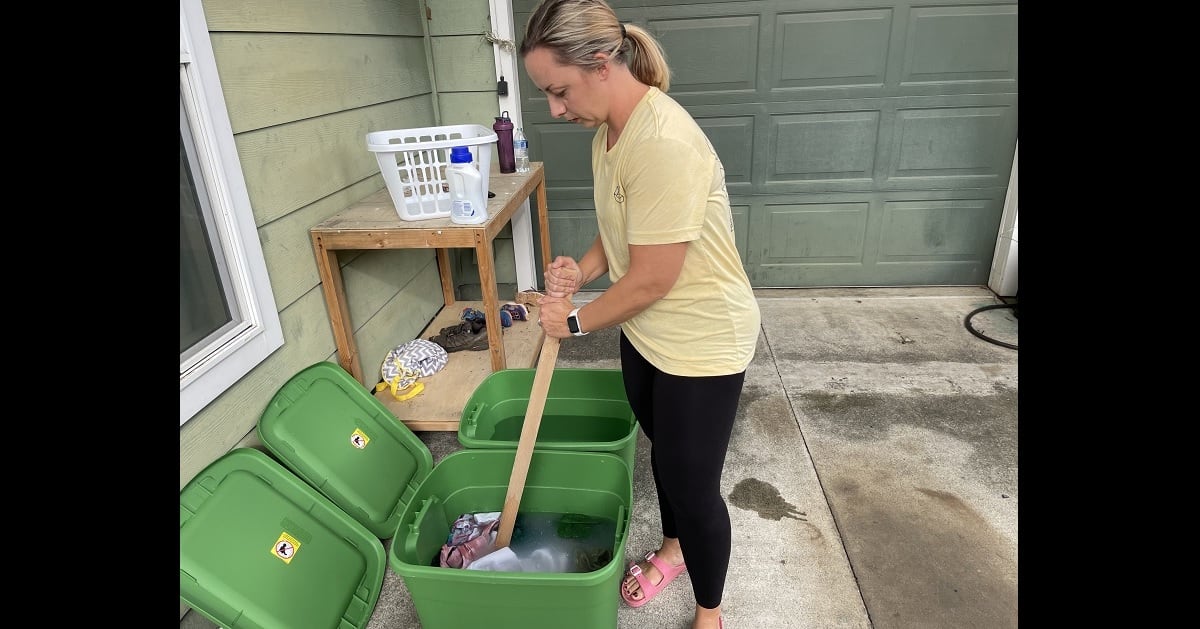The water has been declared safe to drink in all 19 zones within the Navy water system in Hawaii, and displaced residents have left their hotels and moved back to their homes, but that’s not the end of the services’ support for Navy, Army and Air Force families, officials said.
“It’s been a long process to get us to this point, and I’d like to thank each and every one of you for your perseverance and efforts to get us here,” said Navy Capt. Darren Guenther, chief of staff for Navy Region Hawaii, during a March 21 Facebook live update for residents. Resources are still available for families, he said, and testing and monitoring of the water will continue.
On March 18, the Hawaii Department of Health declared that the water in the final four zones was safe for drinking, bathing, cooking and cleaning after reviewing the test results from samples taken in those zones. Its ruling came after a massive operation to flush the Navy’s water distribution system, including all houses and other buildings.
“Rapid response teams” have been set up to respond to residents who report issues with their water. Officials have reminded residents starting to use their water to run each tap for 15 minutes, including hot water taps, to clear out sediment that may have collected in stagnant water.
Call centers are available help residents with questions about a variety of issues related to the water crisis. This includes questions about monetary claims such as temporary lodging allowance for the 3½ months of hotel stays and reimbursement for items that had to be replaced because of damage from the fuel-tainted water, such as baby bottles and pacifiers, water filters and plastic items that came in contact with the water.
Free water distribution will continue until March 29 at the Navy Exchange Mall at Pearl Harbor and the Makai Recreation Center. For residents who chose to stay in their homes before the restoration process was completed, the military has provided free bottled water and bulk water.
Some 9,715 households were affected by the fuel spill that entered the Navy’s water distribution system. Navy officials have said it appears that an unknown quantity of JP-5 jet fuel entered the Red Hill well in a single event, likely from a fuel spill Nov. 20, and then it was subsequently pumped from that well and distributed across portions of the Navy water system.
On Nov. 28, military families reported smelling fuel odors and seeing an oily film in their tap water. But some had reported mysterious symptoms such as abdominal pain, vomiting, memory loss, skin rashes, eye irritation, and teeth and gum issues even before the signs of fuel appeared. In early December, the Navy and Army offered the option for families to stay in hotels at government expense during the water restoration efforts. Some families chose to stay in their homes with water, showers and laundry services provided by the military.
“We all recognize this has been a hardship for those families and want to thank them again for their patience and resilience,” said Secretary of the Navy Carlos Del Toro, in a statement about the restoration of the water. “If they have any concerns or issues regarding their water while moving back into their homes, I ask them to contact the rapid response teams immediately.”
RELATED

The declaration of safe water was determined after the Interagency Drinking Water System Team sampled and tested 10% of the homes and 100% of the schools and child development centers in each zone, three days after the flushing was completed. Families have questioned why only 10% of homes were tested. Navy officials have responded that the Environmental Protection Agency generally recommends that 5% of homes be tested after such a flushing, but the decision was made in this case to test twice that number — 10%.
In a statement, the Hawaii Department of Health said the joint plan for sampling and testing the water “provides accurate data in determining that the water in all homes and buildings is safe.” The Interagency Drinking Water System Team is made up of the Hawaii Department of Health, U.S. Environmental Protection Agency, the Army and the Navy. It was formed Dec. 17 to restore safe drinking water to Joint Base Pearl Harbor-Hickam and Army housing communities.
“I can’t emphasize enough how much I admire the strength of the individuals and families impacted by this crisis,” said Kathleen Ho, Hawaii’s deputy director of environmental health, in the department’s statement. The declarations about the last four zones represent “months of work” to ensure the 19 zones have safe drinking water, she said.
“However, our work is not done,” she said. “We will continue rigorous oversight to protect drinking water, including our aquifer, and will hold the Navy accountable to protect public health and the environment.”
Karen has covered military families, quality of life and consumer issues for Military Times for more than 30 years, and is co-author of a chapter on media coverage of military families in the book "A Battle Plan for Supporting Military Families." She previously worked for newspapers in Guam, Norfolk, Jacksonville, Fla., and Athens, Ga.




